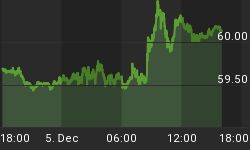As of September 2009, the total amount of physical paper bills and coins throughout the world is approaching US$4.5 trillion. The following figure indicates the countries and monetary unions included in this analysis.

Three of the five monetary unions are clearly seen above. The remaining two are the IEOM which uses the French Pacific Franc in three member countries, and the East Caribbean Currency Union which uses the East Caribbean Dollar in eight member countries.
The following graph shows the growth of global money supply since 1971, a year selected for the reason that the last remaining currency to be convertible to gold (the US dollar) was made inconvertible on August 15, 1971.

Since 1971 the total value of global currency in circulation has been increasing at a rate of 9.09% compounded annually.
The four largest currencies (EUR, USD, JPY and CNY) comprise nearly 75% of all circulating banknotes and coins within the public domain.
| Country/Union | Currency Code | Amount (Billion US$) | Percent of all Circulating Currency |
| European Union | EUR | 1067.6 | 24.00% |
| United States | USD | 862.3 | 19.39% |
| Japan | JPY | 805.4 | 18.11% |
| China (Mainland) | CNY | 539.7 | 12.13% |
| India | INR | 144.7 | 3.25% |
| Russia | RUB | 116.4 | 2.62% |
| United Kingdom | GBP | 89.0 | 2.00% |
| Canada | CAD | 49.9 | 1.12% |
| Brazil | BRL | 46.5 | 1.05% |
| Switzerland | CHF | 42.9 | 0.96% |
| Poland | PLN | 41.1 | 0.92% |
| Australia | AUD | 38.4 | 0.86% |
| Mexico | MXN | 35.3 | 0.79% |
| South Korea | KRW | 27.1 | 0.61% |
| Taiwan | TWD | 26.8 | 0.60% |
| Hong Kong | HKD | 23.8 | 0.53% |
| Others (87) | - | 490.8 | 11.04% |
| Total | - | 4447.7 | 100.00% |
It is apparent that the quantities of money are increasing in an accelerating fashion. In 1990, the total amount of currency in circulation passed US$1 trillion. Twelve years later, the total amount exceeded US$2 trillion. This doubled again less than six years later in early 2008.
The author is of the opinion that these substantial increases to the amount of circulating currency will ultimately lead to decreased purchasing power.
















